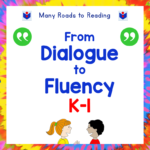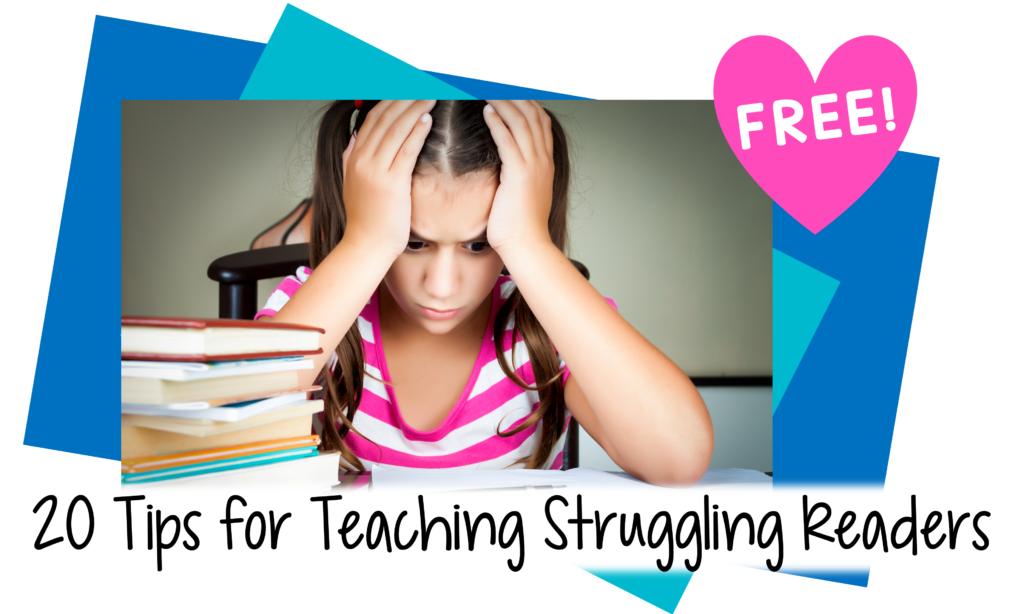Don’t you love that look of surprise in a student’s eyes, when he realizes that he’s not struggling with reading anymore?
I do! That’s one of the reasons I teach fluency early on when working with young readers. The other reason is that fluent reading produces a wonderful domino effect.
You don’t have to wait for fluency to evolve on its own, after a child has mastered decoding in 3rd or 4th grade.
Fluency can—and should—be taught, and earlier than you might think!
With beginning readers, I introduce reading with expression and in phrases as soon as the children can match the spoken word to the word on the page. Word-by-word reading can be habit-forming, and I want to steer clear of that. With older readers, I make sure the student trusts me enough to be nudged toward something new.
So what do I mean by fluency? If you read my other post on teaching fluency, you know that I don’t mean reading rate. Although a fluent reader certainly reads faster than a word-by-word reader, I rarely time my students’ reading. A student who feels pressured to read fast will be less likely to focus on meaning.
Instead of getting out my timer, I listen.
I listen for expression that tells me the student is attending to the punctuation and the meaning of the text. I listen for phrasing, grouping a few words together naturally. And, yes, I listen for smooth reading—but not speed.
All these behaviors can be taught!
Teach fluency and watch the domino effect kick in.
A child who is reading in natural phrases and with expression is focusing on meaning. The reader who is comprehending the text will be able to use the context to confirm her word analysis attempts on-the-run. The reader who is decoding on-the-run while reading fluently will be able to add more words to his sight vocabulary. Better decoding and sight recognition add to comprehension and fluency.
So goes the reading process facilitated by fluency.
Teach fluen cy and watch the domino effect kick in. Watch your students’ frustration turn into confidence.
cy and watch the domino effect kick in. Watch your students’ frustration turn into confidence.
Watch the struggling reader turn into the happy fluent reader.
If you want more ideas about teaching fluency, check out my other blog post on teaching fluency. If you want some materials to facilitate this teaching, look at From Dialogue to Fluency in 4 Steps: Grades K-1 or my fluency custom category on Teachers Pay Teachers.




2 Comments
Leave your reply.